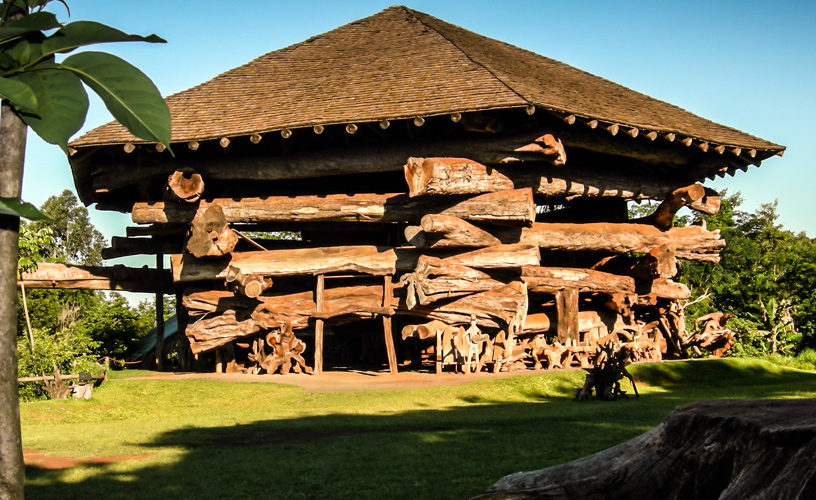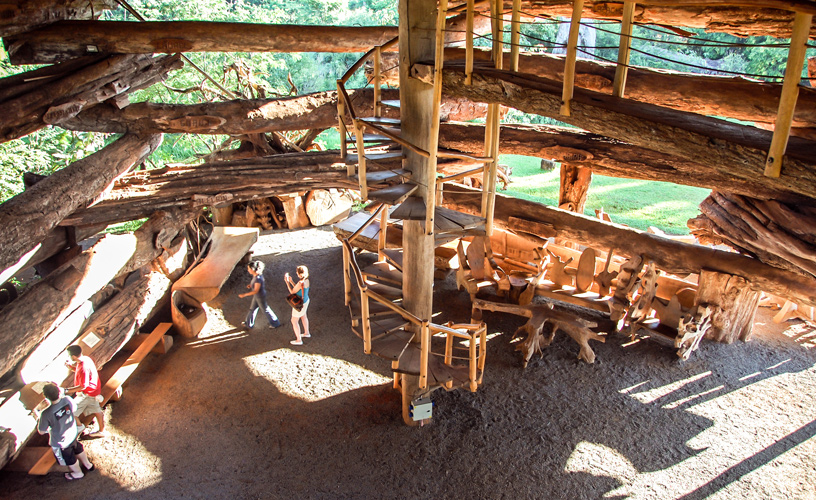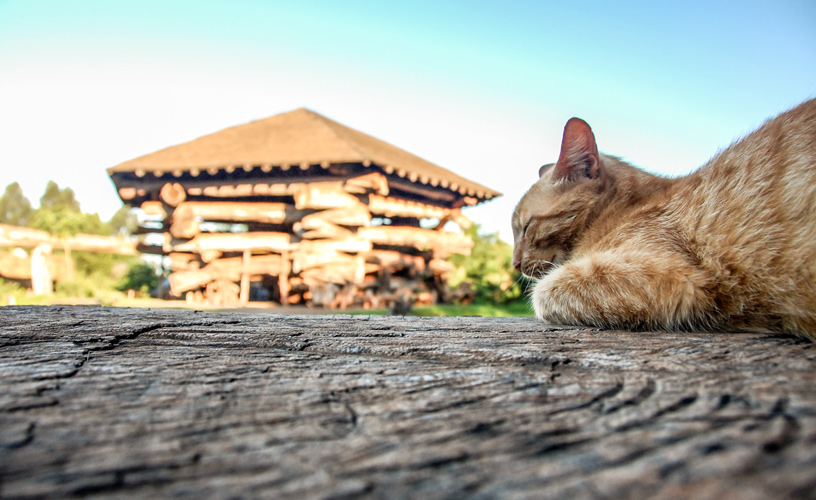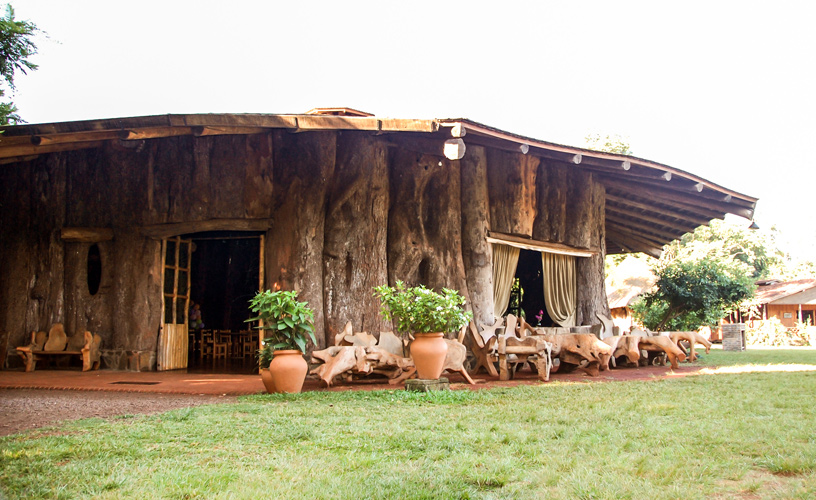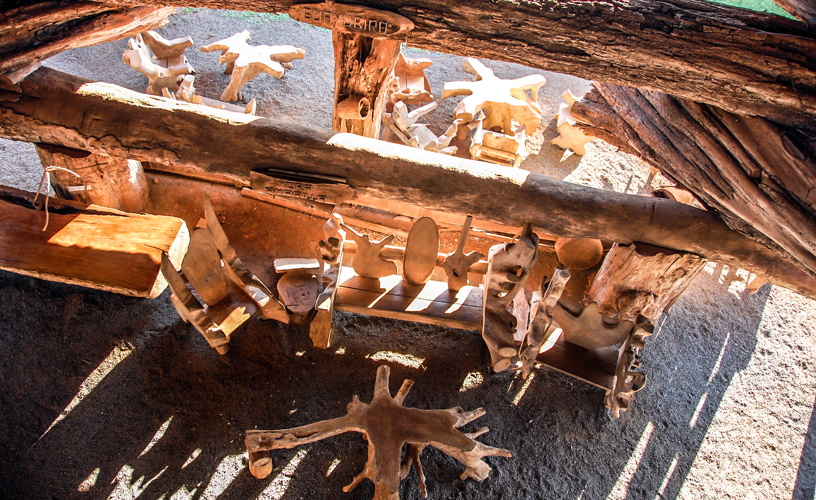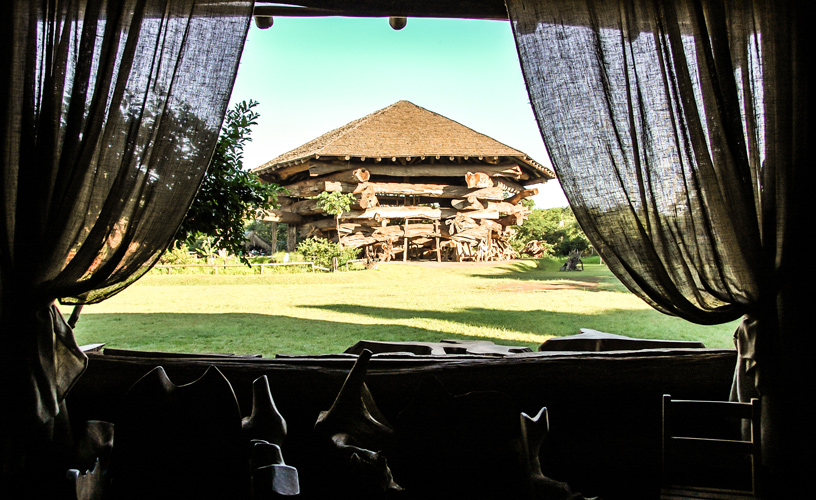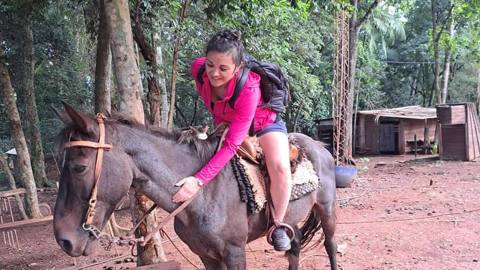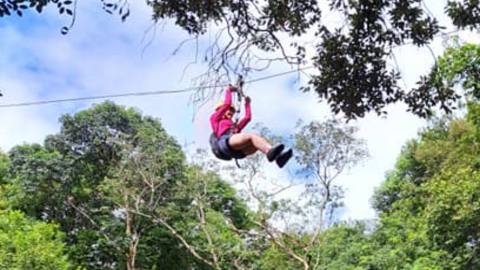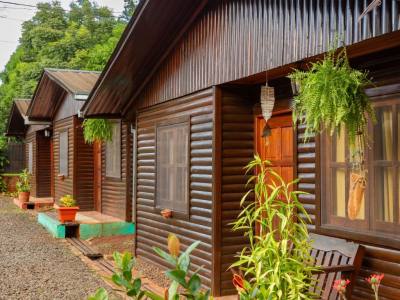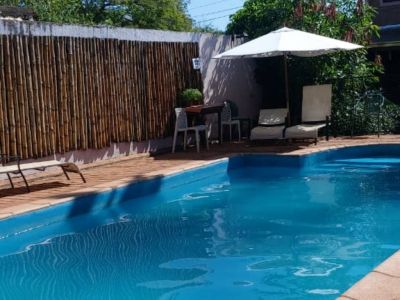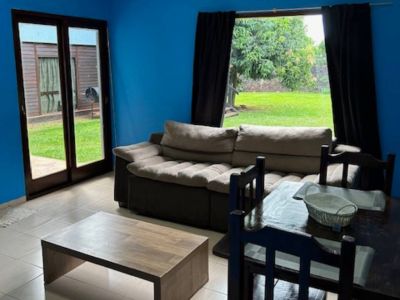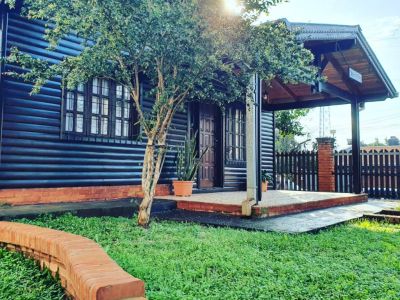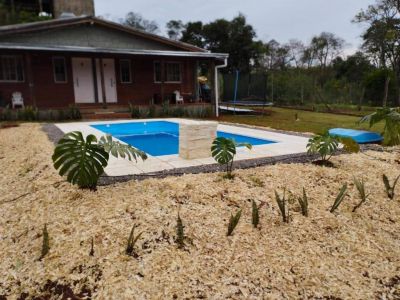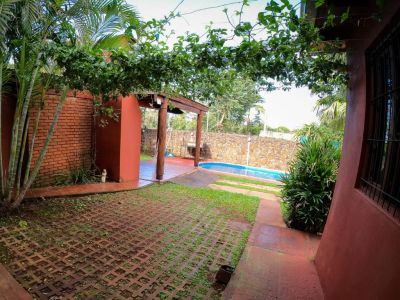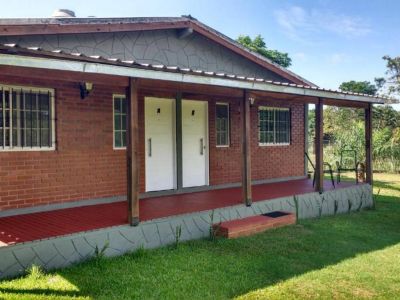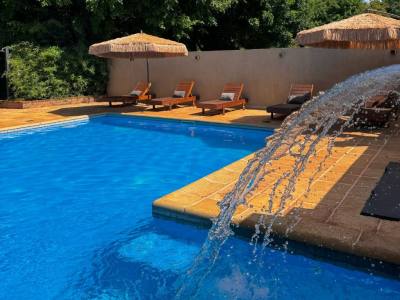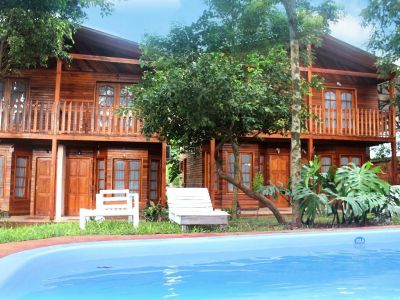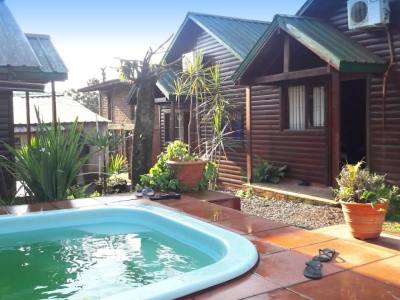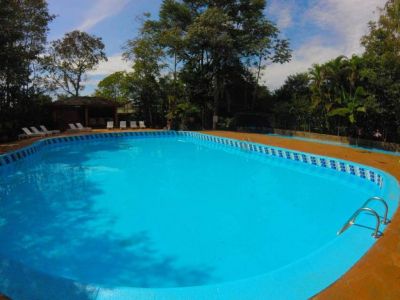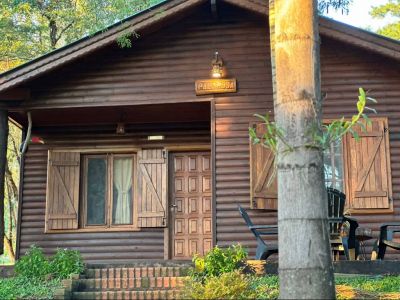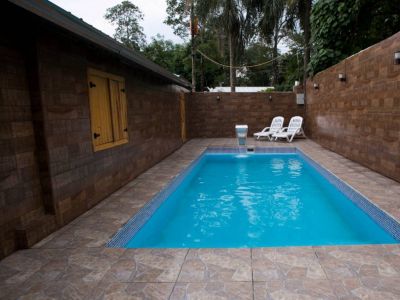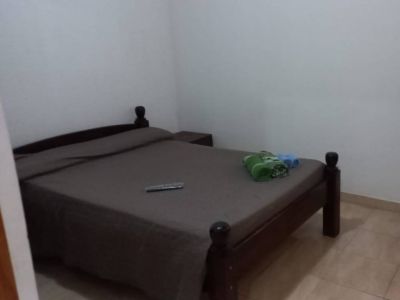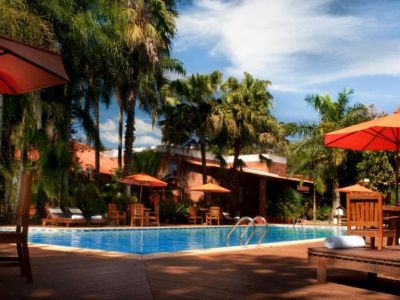The word “Aripuca” derives from the name of a trap made by the Guaraní natives and used to catch animals without hurting them. This agricultural-ecological-tourist project belongs to the Waidelich family, who built a giant aripuca in order to illustrate the richness of the Misiones forest.
Thus, people may learn about the features of the logs with which it has been built, their approximate size and their geographical distribution, as well as their potential and usefulness. Likewise, visitors may get information about the guaraní culture through a local element used in hunting practices.
With the purpose of improving our knowledge on this particular tourist proposal, we began our tour around the venue. A local guide was our host. He led us on an educational circuit through the interpretation room and the guaraní handicrafts room until we arrived in the huge aripuca itself.
La Aripuca: a Trap for Destiny
From a distance, we began to appreciate a log structure reaching 17 meters of height, featuring a 30-meter diameter and weighing 500,000 kg made with endangered trees. It is important to point out that many of the trees that make up the aripuca were purchased at sawmills where they were about to be turned into timber. Others were recovered from farms where they had been beaten down by storms or else had already finished their life cycle.
The truth is that this real monument combines 28 species of native trees. They include: lapacho abá, cedro misionero, timbó, palo rosa, peteribí or loro negro, azota caballo, incienso, curupa-í, marmelero, mora amarilla, guayubira, cañafístula or ibirá pitá, lapacho negro, samohú or algodonero, alecrín, guaicá, laurel, camboatá, espina de corona, anchico, sombra de toro, guatambú, grapia, quina or palo amargo, pino paraná or araucaria, ceibo misionero, sapuí or palo de canga. The names of each tree has been carved into their bark and visitors may reach the top of the aripuca using the staircases.
We began to tour around the giant trap and the guide explained to us how it would be used. “The natives put food inside the aripuca, and when the animal came in to eat it, it would step on a stick and the trap would fall into its original position catching the prey without killing it. This is the way the species that made up most of the diet of the Guaraní natives were caught. They included pigeons, hens and rabbits.” – the guide told us.
When walking inside the aripuca, visitors are impressed by the size of the logs. We moved about the place feeling the various textures of each bark. The trees give off an unusual smell appreciated when getting our noses close to them. We stayed there for a couple of seconds trying to recreate ancient customs. Undoubtedly, the aim of the Aripuca had succeeded, as we were already thinking about the rainforest and the urgent need to preserve it.
Let’s hope that the guaraní trap can turn into a real trap for destiny, which is leading our rainforests right into the path of extinction.
Marcelo Sola
Eduardo Epifanio
Contact of the excursion or tour
La Aripuca
Ruta 12 - Km. 4.5, Puerto Iguazú, Misiones, Agentina
Phone: +54 3757-423488
Cell phone: +54 3757-317594
